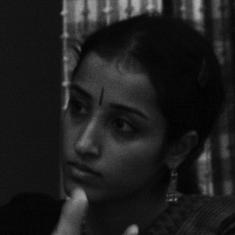Such flights were taken in Calcutta as well during the past two decades of the 19th century. In the nascent stage of the nationalist movement those balloon flights constituted an important phase in the physical culture movement of Bengal.
The physical culture movement was an interesting response to the age-old colonial stereotyping of the Bengalis as “low-lying people in low-lying land”. Since the beginning of the 19th century, the British rebuked their colonial subjects for their “grit of a rabbit” and their physical feebleness.
Thus, it became imperative for the Bengalis to devise an effective way to counter the colonial charges. Intellectuals of Bengal took it upon themselves to take effective steps in this regard, leading to the foundation of a number of organisations devoted for the cultivation of physical training and activities.
But balloon flights by Indian gymnasts have mostly escaped the attention of historians. Abhijit Gupta, however, recognised the importance of balloon flights in the history of the physical culture movement, in his article on Gobor Guha, the wrestler. The only work that had thus far dealt with this forgotten chapter was Amitabha Ghosh’s article, which came out in 1992.
Amitabha Ghosh, a scientist, excavated interesting accounts of the achievements of the Bengalis in various aspects of modern science and technology in colonial Bengal and wrote about the balloon flight as one of the interesting accomplishments of the period.
Dawn of ballooning
Ballooning took divergent paths in Britain and France. Instead of being a medium of scientific experiments in Britain, ballooning became a way of showcasing the daring skills of acrobats and trapeze artists. These acrobats were leaders of a new profession and some of them soon emerged as great showmen, touring across the country and abroad, including Calcutta, the second city of the British Empire, entertaining audiences with their spellbinding feats.
D Robertson, P Maigret, Fitzherbert Kight were some of the early aeronauts who exhibited their skills before the people of Calcutta. However, it was during the tour by aeronaut Perceval Spencer of Calcutta in 1889 that the physical culture movement was in full swing and the Bengalis realised that it was possible to make a statement before the colonial rulers by emulating their own feats.
Spencer made his first flight in the city on March 19, 1889, and his success was greeted with great pomp by British officials and Bengali babus. Spencer’s stunning success also inspired a number of young Bengalis, who realised that with the same old routine of physical training had reached a stagnation point and that ballooning could provide a perfect avenue to showcase their mettle.
Abatarchandra Laha, a gymnast met and requested Spencer to accept him as his student so that he could make balloon ascents and parachute descents. Besides Laha, another Bengali, Anil Chandra Banerjee also approached Spencer with a similar request through an open letter in the newspaper. The letter shows how contemporary Bengali youth considered such daring acts to be important for making a statement.
Banerjee wrote, “Sir, if you kindly publish the following few lines in your widely circulated paper for Mr P Spencer’s information I shall be heartily thankful to you. To convince the world that there were natives of India who were no less daring than other people in the world, I wish to undertake the task of ascending in a balloon and descending with a parachute. With this intention I propose to Mr. Spencer that if he allows me to take my flight by his balloon, I shall be highly obliged and the flight will be very interesting as well as a matter of glory for Indians that a Bengali young man who has not yet [reached ] 20 years will play such an adventurous part. In conclusion, I wish to say I will perform the feat without any pecuniary consideration.”
First solo flight
Unfortunately neither Laha’s nor Banerjee’s dreams materialised. Banerjee’s letter found no response from Spencer. As for Laha, his sponsors backed out at the last moment because they felt such acts were too dangerous for a Bengali to undertake.
However, it was Laha who introduced Ram Chandra Chatterjee Spencer. Chatterjee would eventually become the first Indian aeronaut. Laha insisted to Chatterjee that balloon ascent was a more daring act than trapeze and introduced him to Spencer. Ram Chandra Chatterjee was already well-known for his gymnastics and trapeze acts after he began his career as an acrobat in the National Circus Company founded by Nabagopal Mitra. Ram Chandra was successful in securing the necessary sponsor for the balloon ascent from Gopal Chandra Mukherjee of Pathuriaghata, and the date of the historic event was fixed for April 10, 1889.
The first flight that Ram Chandra took was a joint effort with Spencer. The balloon ascended from the grounds of Oriental Gas Company at Narkeldanga, and after an hour’s journey the balloon finally descended at a village near Barasat. The historic incident was widely reported in newspapers. The Evening Mail commended the pluck of the athletically built man. Hindoo Patriot praised the well-known athlete for showing cool courage and an indomitable spirit.
Ram Chandra thereafter readied himself for his first solo flight, which was scheduled for May 4, 1889. He purchased Spencer’s balloon, Viceroy, and rechristened it the City of Calcutta. On May 4, in the presence of around eight thousand spectators, including the commissioner of police and a few “scientific gentlemen”, the City of Calcutta ascended successfully. After taking off at 5.10 pm the Balloon moved in a northerly direction, landing safely near Sodepur at around 5.50 pm. The Nebutala Youngmen’s Club congratulated Ram Chandra by saying that even a European would feel proud of his achievement.
Both European and Bengali newspapers lauded Ram Chandra’s spectacular success. The Bengalee provided a detailed account of the journey in Ram Chandra’s own words as he reflected on the way he had mastered art of ballooning. The Bengali Times proudly pointed out that Ram Chandra had not only silenced all who doubted his ability but also those who ridiculed the Bengali race.
Calcutta Balloonists Company
It was on this occasion that Ram Chandra launched his Calcutta Balloonists Company along with his sponsors, announcing his intention of touring the northern provinces of the country. Under the colonial set-up, where entrepreneurship was discouraged by policy, this was a move worth noting. The daringness that Ram Chandra displayed during his ascent in Allahabad found special mention in newspapers round the country.
Hindoo Patriot, Indian Daily News, Pioneer and Morning Post praised Ram Chandra’s accomplishment. It was during this period that a detailed interview of Ram Chandra was published in Lahore’s Civil and Military Gazette. At a time when sports reports were few and far between, an interview dedicated to an acrobat, that too an Indian, was remarkable indeed. Moreover, this interview provided the only platform where one could get a glimpse of Ram Chandra’s own views.
In an interview, Ram Chandra did not hide his pride at being the first in India to complete such a daring feat, and announced his desire to do a parachute descent in the near future. The dream of accomplishing a parachute jump was realised on March 22, 1890, in Calcutta before a number of important guests. The Chinese ambassador was present with his followers. Two noted Bengali personalities were present, Abanindranath Tagore, the painter, and Jogindranath Sarkar, the educationist and author. Both left behind vivid eye-witness accounts of the event. Jogindranath expressed astonishment at the huge congregation of spectators.
The balloon took off at 5.30 pm in a north-easterly direction and the jump was made within five minutes of the ascent. Abanindranath, in his inimitable style, wrote about the anxious moments the spectators had to go through until the parachute opened and about the wild celebrations that took place after the landing. Newspaper reports described the enthusiastic response of the spectators. The event was rounded off with an elaborate public felicitation of Spencer and Ram Chandra.
India tour
Ram Chandra then began planning a tour of India. On November, 1890, he made a parachute descent at Tis Hazari in Delhi. Ram Chandra’s valiant show was highly appreciated by the elites of Delhi. From Delhi he travelled westwards and performed in Lahore and Rawalpindi.
On November 1891, Ram Chandra was invited by the maharaja of Indore to put up a show before the viceroy. From Indore, he travelled to Agra and Banaras, where he enthralled the crowd for the last time with his skills. He was seriously hurt during his next parachute descent in his native state. Ram Chandra never recovered from the injuries, dying after he was brought back to Calcutta on August 9, 1892.
Another Bengali, Prabodh Chandra Laha also became impressed with Spencer’s balloon ascent and parachute descent and became the latter’s student in 1890. Laha, like his predecessor, Ram Chandra, also was a gymnast and trapeze artist at Harimohan Ray’s Circus. After Ram Chandra’s death, PC Laha carried forward his legacy and completed more than twenty balloon ascents and parachute descents all over the country before retiring.
On February 15, 1890, along with Spencer and three other co-passengers, PC Laha became the second Indian to make a balloon ascent, from the grounds of the Tivoli Garden.
Laha made his solo ascent successfully from the same ground within a couple of weeks with financial help from Lalbehari Saha. PC Saha’s first solo flight is important because this was the first instance of Indian women acrobats taking part in a balloon ascent. These acrobats, whose names history has not recorded, were not part of the main balloon ascent, but were brought to exhibit their acrobatic skills before the main event. However the contemporary Press applauded the efforts of Saha and his assistants.
The Bengalee wrote, “It is quite clear that the character of the Bengali is undergoing a formation. They have began to show pluck and dare (sic) with which they are not ordinarily credited. Even Bengali women have come to the front in this respect…..” The balloon ascents helped in questioning the myth about the unique physical prowess of the colonisers. Ram Chandra and others made it clear that the Bengalis could acquire skills to undertake daring feats.
This first appeared on the Cultural Cartographies of Media blog. Read the original version here.










